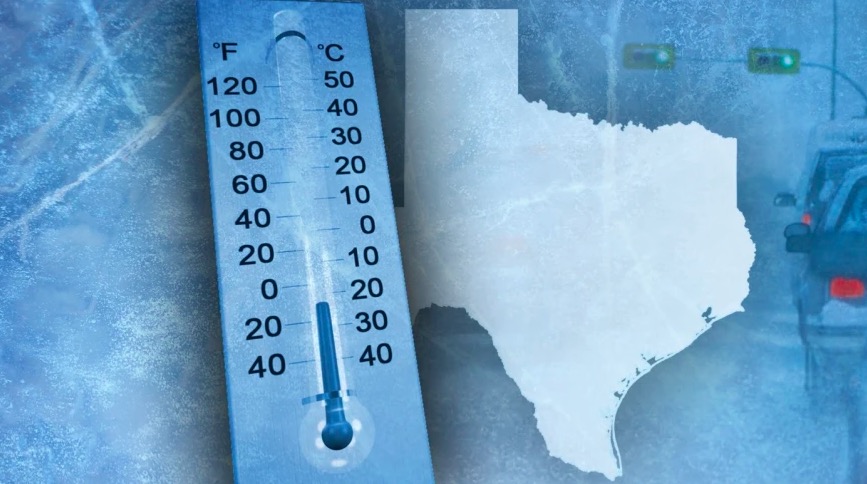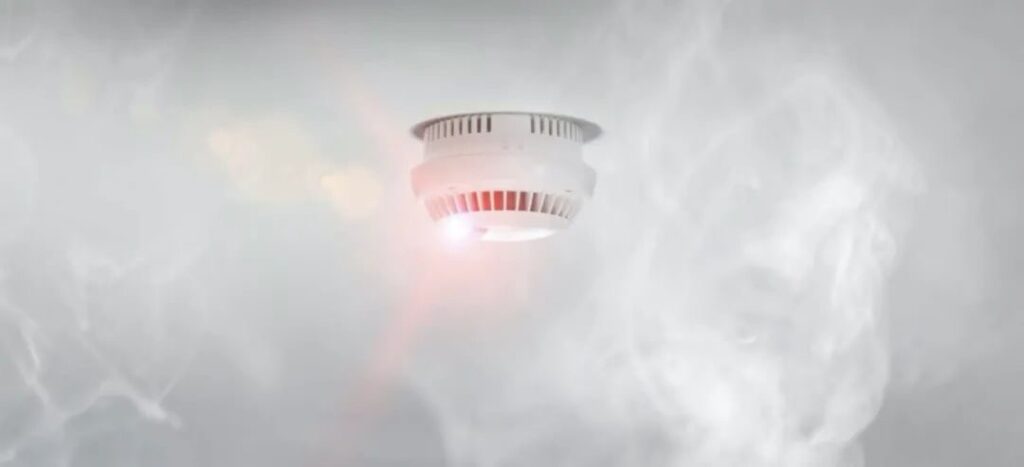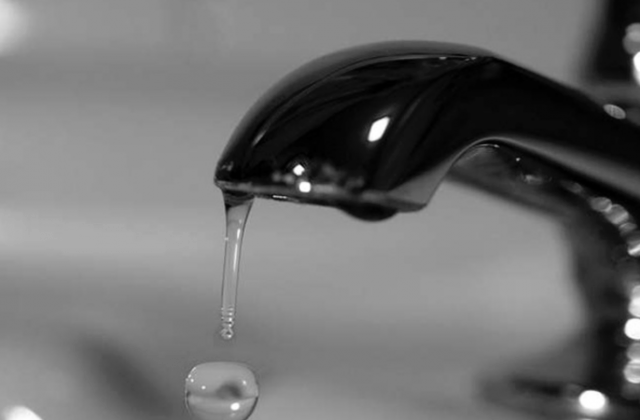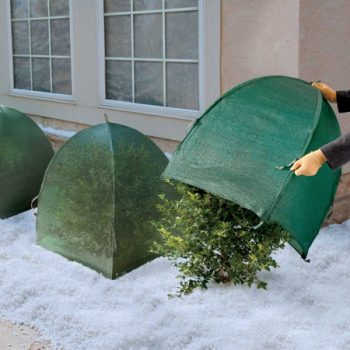Central Texas’ first, good taste of wintry weather since last February’s rounds of winter storms is in the forecast later this week. We want to make sure you are aware of what to expect as well as how to prepare for this particular event.
First and foremost, we are NOT anticipating a widespread, crippling winter storm like last year. However, since wintry weather occurs so infrequently in Central Texas, it’s important to brush up on what to expect as well as how to prepare since every event is different.

Your electricity: Prepare yourself
Any time there is wintry weather, the threat for power outages does rise. Is it possible for them to happen this week? Yes. But not to the scale that we had last year. Untreated icy roads prevented a lot of our city’s electricians from being able to get to outages, which will not be the case this week.
Keep in mind, we likely will not see enough ice to weigh powerlines down long enough for them to cause power outages. However, what is possible is for car accidents to occur from black ice and vehicles running into a power pole.
If you are one of the hundreds, if not thousands, of Texans who recently purchased a home generator, make sure it is placed safely outside and away from your home. Placing it inside, or too close to an air vent can cause the fumes and exhaust to enter your home.
Texas officials want you to build a kit for the next winter storm
Prior to last year’s winter storms, KXAN spoke with some Central Texas experts for some tips to help you and your family prepare for wintry weather.
Jennifer Herber of Austin Energy offered some tips for those who could be impacted:
Storm prep kit with a plan: This is always a good idea, no matter the weather. Staying prepared is key. Put together a storm prep kit that has flashlights with fresh batteries. Herber says they like to advise that people avoid candles since they can become a fire risk. Have water, blankets, and snacks at the ready and also talk to your family about what you all will do if the power goes out.
Have an extra portable phone charger on hand: We can’t always have our devices completely charged, but having a portable charger just might be that saving grace get you through.
Keep the thermostat at 68 degrees if you can: During a really cold storm, this can help save energy, thus potentially preventing the need for rolling outages or causing even more outages in your area.
Sign up for Outage Alerts with Austin Energy: A spokesperson says those alerts will keep you updated on what is going on when there is an outage and how to stay safe
Note: During major winter weather related outages, Austin Energy says the Estimated Restoration Time from their Outage Map is not applicable because of the variables involved with making the repairs.
They recommend you watch their social media accounts for the latest updates on their work Watch for downed power lines: If you see a downed power line, assume it is energized and do not go near it or drive over it. Call 311 to report it, and if you see sparks, call 911 immediately.
Heater safety, carbon monoxide poisoning
OchsnerHealth advises you to check your smoke detectors to ensure they’re working. Change the batteries ahead of time.

The health provider also tells you to install a carbon monoxide detector on every floor of your residence. CO is a poisonous gas that can be harmful and decreases the blood’s ability to carry oxygen. CO poisoning symptoms can include headaches, dizziness, weakness, upset stomach, vomiting, chest pain and confusion, according to the CDC.
Make sure you’re getting your gas heater checked out at least once a year by a professional, OchsnerHealth said. A broken heater or furnace could leak carbon monoxide into your home or cause a fire.
In a similar way, have a professional look at your fireplace and clean it every year. Keep flammable materials away from the fire and do not burn trash or cardboard boxes in it.
Don’t use your oven or stove as a heating source. This poses a fire hazard and can release dangerous gases, the health provider said.
Keep a safe perimeter around electric space heaters. Check for faulty wiring as well that could create an electric shock or fire. Keep an eye on children and pets around the heater, and turn the heater off before leaving the room or going to bed, OchsnerHealth advises.
Plumbing: Prevention is key
Temperatures are forecast to plummet behind the cold front, which will arrive Wednesday evening. After it blasts through, temperatures will hover in the 30s to mid and upper 20s from shortly after midnight Thursday through about mid-morning Friday. It’s bringing our longest stretch of freezing to near freezing temperatures since last February.
The temperatures and the duration for which we expect to experience them will be out of the norm for Central Texas, but this will not be on magnitude of last February where we saw 6 days of below freezing temperatures — most of which was spent in the single digits, teens and 20s.
Mike Marugo, Austin plumbing division manager for ABC Home & Commercial Services offered his expertise last year on what to do before, during and after freezing cold temperatures.
BEFORE the event:
Check your pipes: If they are exposed, which is common for homes in Central Texas, make sure they are insulated properly, especially if they are in a crawl space or attic.
Check your hose bibs: Experts recommend looking over your spigot to make sure there are no leaks. This will help prevent freezing and cracking. You can also cover your hose bibs to help protect them.
DURING the event:

Open the cabinets under sinks/near plumbing: This will help pipes receive more exposure to the heat inside your home to prevent freezing.
Watch your inside temperature: Do not turn your heat temperature too low at night or when you are leaving your home, otherwise it prevents your pipes from benefitting from that heat.
Drip several faucets throughout the inside of your house: You don’t have to do all of them, but while you’re not using any fixtures with an outside wall on one side, allow them to drip from both the cold and hot water. DO NOT drip the hose spigots on any outside fixtures.
AFTER the event:
If no water comes out when you turn the water on, that could indicate some freezing, but don’t panic, that doesn’t mean anything is broken. Have it checked out by a plumber to be sure.
Check for anything that sounds like it’s running, even when you don’t have anything on. That could mean there’s a problem.
If you don’t have proper insulation for your pipes, keep that in mind for after this weather event and make it a point to get that done to prepare for the next time.
If you are renting, guidance from the City of Austin says you could be held responsible for property damage if a pipe breaks during severe weather conditions. Residents should contact property management, their landlord or maintenance personnel to find the property’s cut-off valve ahead of time to try to avoid any issues.
In the event of an emergency, call Austin Water’s 24-Hour Emergency Hotline at (512) 972-1000, and press Option 1.
Landscaping, plants and sprinkler systems
For those of you with picturesque lawns and beautiful foliage adorning your home, the experts encourage you to plan ahead.
“The more you do and put in the time and effort to prevent, the more thankful you’ll be after the fact when this is over, and you have little to no damage at all,” said Scott Martin, the division manager over lawn, landscape, tree and irrigation services with ABC Home & Commercial.
The key to preventing any big plant catastrophes is to protect their roots. “Damage to plants above ground is not as critical to damage below ground,” Martin said.
Here are some tips:
Cover your plants: You can use blankets, drop cloths and even bed sheets to go over them, but the key is to create some space between the cover and the plant itself. In that empty space, that air will stay warmer, thus helping to protect your plant.

Add some mulch: Applying three to four inches of mulch to the roots of plants will help keep the soil warm and protect the roots. It produces heat, so by putting that down, that can make a huge difference.
Move plants that are in containers and those are that freshly planted: These are the most vulnerable to the cold. You don’t have to bring them inside — putting them in a garage will work.
Water the day or two before the freeze event: That will create an insulated soil effect, filling those spaces of air in it with heat and will help the temperature of the soil stay higher and slow down the freezing process. At the same time, do NOT water the foliage above ground. That will defeat the soil watering purpose.
Turn off your sprinkler system during the main freezing temperature event. Do run your sprinkler system immediately after that weather event during the day, and at a time where you can watch to be sure there are no leaks or broken heads.
Disconnect your hose: Leaving water in a hose is a recipe for freezing and cracking.
Smith did stress after the wintry weather goes away and then sun is out, be sure to remove those covers off your plants to air them out and prevent freezing again.
If any issues should come up, Martin says you should always reach out to the professionals for help.
The Article is from kxan.com/ copyright belongs to owner





